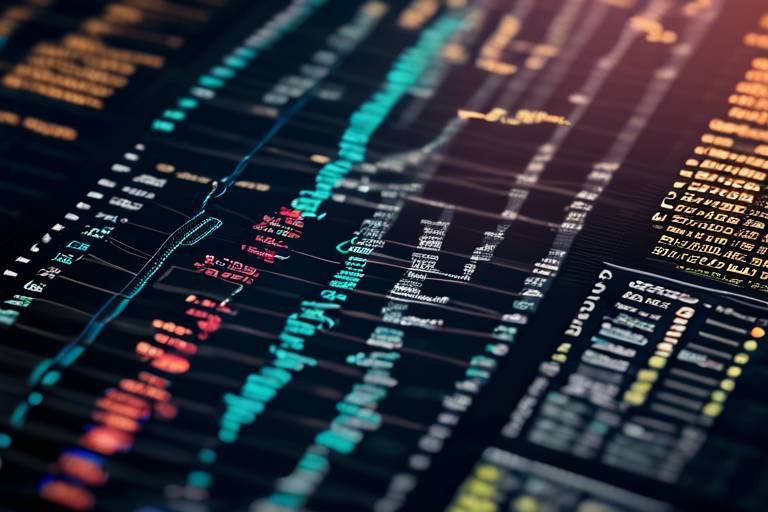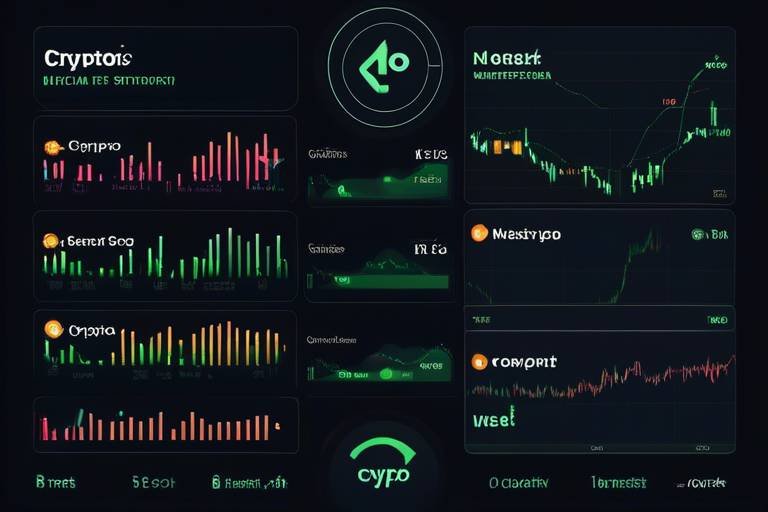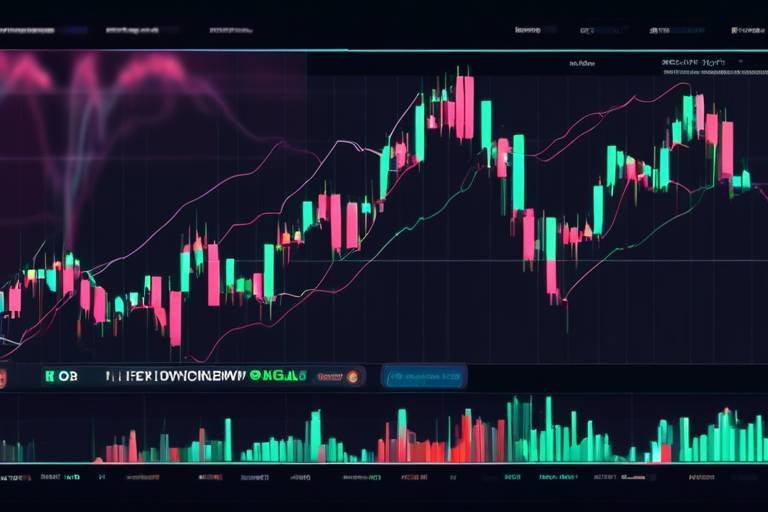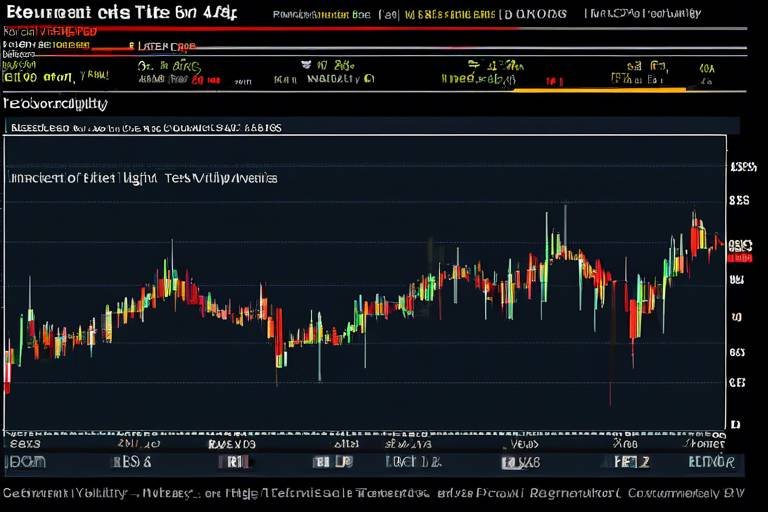How to Analyze Historical Data for Better Crypto Trading
In the fast-paced world of cryptocurrency trading, understanding how to analyze historical data is not just beneficial—it's essential. Imagine trying to navigate a stormy sea without a compass; that's what trading without historical data feels like. By diving deep into past price movements and market behaviors, traders can uncover valuable insights that shape their strategies and decision-making processes. This article explores effective methods for analyzing historical data to enhance crypto trading strategies, improve decision-making, and maximize potential profits in the volatile cryptocurrency market.
Historical data serves as the backbone of any trading strategy. It’s like a treasure map that guides traders through the ups and downs of the market. By analyzing this data, traders can identify patterns, trends, and anomalies that might otherwise go unnoticed. For instance, did you know that certain cryptocurrencies tend to follow specific cycles? Understanding these cycles can help you make informed decisions about when to buy or sell. Historical data not only provides insights into price movements but also reveals how external factors, such as news events or regulatory changes, influence market behavior. This understanding is crucial for developing a robust trading strategy that can withstand the test of time.
Identifying reliable data sources is essential for accurate historical analysis. Without trustworthy data, your analysis could be as misleading as a mirage in the desert. Fortunately, there are several platforms and tools available that offer comprehensive historical data for cryptocurrencies. Here are some of the most popular sources:
- Cryptocurrency Exchanges: Many exchanges provide historical data for various trading pairs. Understanding how to access and interpret this data can significantly enhance your trading strategies.
- Market Data Aggregators: Websites like CoinMarketCap and CoinGecko compile data from multiple exchanges, giving you a broader view of the market.
- APIs: Application Programming Interfaces (APIs) allow traders to automate the retrieval of historical data, making it easier to analyze large datasets efficiently.
Many cryptocurrency exchanges offer historical data for trading pairs. For example, Binance and Coinbase provide access to extensive historical price charts. Understanding how to navigate these platforms is key to enhancing your trading strategies. When you access historical data from exchanges, pay attention to the timeframe you are analyzing. Daily, weekly, or monthly data can yield different insights, so choose wisely based on your trading style.
Using APIs from exchanges allows traders to automate data retrieval for historical analysis. This means you can set up scripts that pull data at regular intervals, ensuring you always have the latest information at your fingertips. Automating this process can save you countless hours, allowing you to focus on what really matters: making informed trading decisions.
CSV downloads from exchanges provide a straightforward way to obtain historical price data for offline analysis. This method is particularly useful for traders who prefer to conduct in-depth evaluations using software like Excel or Google Sheets. By manipulating the data, you can uncover trends that may not be immediately apparent through standard analysis.
Utilizing market indicators derived from historical data can help traders identify trends and potential entry or exit points in the market. Indicators such as Relative Strength Index (RSI) and Moving Average Convergence Divergence (MACD) can provide additional layers of insight, allowing you to make more informed decisions. For instance, if the RSI indicates that a cryptocurrency is oversold, it might be a good time to buy, while an overbought signal could suggest it’s time to sell.
Technical analysis involves using historical data to predict future price movements. By employing various techniques and tools, traders can gain a clearer picture of market dynamics. For instance, recognizing chart patterns is vital for predicting market movements. Patterns such as head and shoulders or double tops can signal potential reversals, while bullish flags might indicate continuation. Understanding these patterns can be the difference between a profitable trade and a costly mistake.
Recognizing chart patterns is vital for predicting market movements. Common patterns include:
- Head and Shoulders: Indicates a reversal from bullish to bearish.
- Double Tops: Suggests a potential price drop after a peak.
- Flags and Pennants: Indicate continuation of the current trend.
Each pattern tells a story about the market sentiment and can provide traders with valuable insights for their strategies.
Moving averages smooth out price data to identify trends over time. They act like a safety net, helping traders avoid the noise of daily price fluctuations. Understanding how to use different types of moving averages—such as simple moving averages (SMA) and exponential moving averages (EMA)—can enhance your trading accuracy. For example, when the short-term EMA crosses above a long-term SMA, it might signal a bullish trend, prompting traders to consider entering a position.
Backtesting involves applying trading strategies to historical data to assess their effectiveness. It's like a dress rehearsal before the big performance. By simulating trades using past data, traders can evaluate how their strategies would have performed under various market conditions. This process not only helps in fine-tuning strategies but also builds confidence in your trading approach.
Defining parameters for backtesting is crucial for accurate results. Traders should set realistic conditions and expectations for backtesting outcomes. This includes determining entry and exit points, stop-loss levels, and position sizes. By carefully crafting these parameters, you can create a more reliable simulation that reflects potential real-world outcomes.
Assessing the performance of backtested strategies helps traders refine their approaches. Key metrics to consider include:
- Win Rate: The percentage of profitable trades.
- Risk-Reward Ratio: The ratio of potential profit to potential loss.
- Maximum Drawdown: The largest drop from a peak to a trough.
By analyzing these metrics, traders can identify strengths and weaknesses in their strategies and make necessary adjustments for future trades.
Effective risk management is essential in crypto trading. The volatile nature of cryptocurrencies means that prices can swing wildly, making it crucial to have safeguards in place. Historical data can inform risk management strategies to minimize potential losses. For instance, analyzing past price movements can help traders determine appropriate stop-loss levels and position sizes.
Determining the appropriate position size based on historical volatility can help traders manage risk effectively. By calculating the potential loss for each trade and adjusting your position size accordingly, you can protect your capital while still taking advantage of market opportunities. It's like finding the right balance on a seesaw—too much weight on one side can lead to disaster.
Implementing stop-loss orders based on historical price levels can protect against significant losses. By setting a stop-loss just below a key support level, for example, traders can minimize their risk while allowing for potential price fluctuations. This strategy not only helps in protecting your investment but also instills discipline in your trading approach.
Q: How can I find reliable historical data for cryptocurrencies?
A: You can find reliable data through cryptocurrency exchanges, market data aggregators, and APIs that provide historical price information.
Q: What is backtesting, and why is it important?
A: Backtesting is the process of applying trading strategies to historical data to evaluate their effectiveness. It’s important because it helps traders refine their strategies based on past performance.
Q: How do I determine the right position size for my trades?
A: The right position size can be determined by analyzing historical volatility and calculating the potential loss for each trade, allowing you to manage risk effectively.

Understanding Historical Data
Historical data is the backbone of successful crypto trading. Imagine trying to navigate a ship without a map; that’s what trading without historical data feels like. This data encompasses past prices, trading volumes, and market trends, providing traders with a treasure trove of insights into how cryptocurrencies have behaved over time. By analyzing this information, traders can make informed decisions that align with market patterns and potential future movements.
When we talk about historical data, we’re diving into a rich pool of information that can reveal the ebb and flow of the cryptocurrency market. For instance, by examining past price movements, traders can identify trends—whether a cryptocurrency is generally on the rise, in a slump, or fluctuating wildly. This knowledge is crucial, especially in a market as volatile as cryptocurrency, where prices can swing dramatically within hours.
Moreover, understanding historical data helps in recognizing market cycles. The crypto market often operates in cycles of bullish and bearish phases. By studying these cycles, traders can anticipate potential turning points. For example, if a particular cryptocurrency has historically shown a pattern of rising after a certain price drop, a trader might decide to buy in anticipation of a similar future pattern.
It’s important to note that not all historical data is created equal. The quality and accuracy of the data can greatly influence trading decisions. Traders should focus on reliable sources that provide comprehensive datasets. Here are a few key aspects to consider:
- Accuracy: Ensure the data is sourced from reputable exchanges.
- Completeness: Look for data that covers significant timeframes and various market conditions.
- Granularity: The ability to analyze data at different intervals (e.g., hourly, daily) can provide deeper insights.
In conclusion, understanding historical data is not just about looking at numbers; it’s about interpreting the story those numbers tell. By leveraging this data, traders can enhance their strategies, make informed decisions, and ultimately improve their chances of success in the unpredictable world of crypto trading.

Data Sources for Historical Analysis
When it comes to enhancing your crypto trading strategies, reliable data sources are your best friends. Historical data is like a treasure map for traders, guiding them through the often turbulent waters of the cryptocurrency market. But where do you find this invaluable information? Fortunately, there are several platforms and tools available that provide comprehensive historical data for cryptocurrencies. Let's dive into some of the most popular sources.
First and foremost, cryptocurrency exchanges are a primary source of historical data. Most exchanges offer a wealth of information on trading pairs, including price movements, volume, and market trends. For instance, platforms like Binance, Coinbase, and Kraken not only allow you to trade but also provide access to historical data that can be crucial for making informed trading decisions. The challenge lies in understanding how to access and interpret this data effectively. Many exchanges have user-friendly interfaces that allow you to filter data by date ranges, trading pairs, and other parameters.
One of the most efficient ways to gather historical data is through API access. Most major exchanges offer APIs that allow traders to automate the retrieval of data. This is particularly useful for those who want to analyze large datasets without the hassle of manual downloads. By using APIs, you can pull in historical price data, trading volumes, and even order book information directly into your analysis tools. This automation not only saves time but also enables you to conduct real-time analysis, which can be a game-changer in the fast-paced world of crypto trading.
If APIs sound a bit too technical, don’t worry! You can also obtain historical data through CSV downloads. Most exchanges provide an option to download historical price data in CSV format, which can then be imported into spreadsheet software like Excel or Google Sheets. This method is straightforward and allows you to conduct in-depth evaluations offline. You can manipulate the data as you please, create charts, and even perform statistical analyses to uncover trends and insights that might not be immediately obvious.
In addition to raw historical data, many platforms offer market indicators derived from this data. Indicators such as Relative Strength Index (RSI), Moving Average Convergence Divergence (MACD), and Bollinger Bands can help traders identify trends and potential entry or exit points in the market. By utilizing these indicators, you can gain a clearer picture of market dynamics and make more informed trading decisions.
In conclusion, having access to accurate and comprehensive historical data is vital for any trader looking to improve their strategies. Whether you choose to utilize cryptocurrency exchanges, API access, or CSV downloads, the key is to leverage this information effectively. By doing so, you'll not only enhance your understanding of market behavior but also position yourself for greater success in the ever-evolving landscape of crypto trading.
- What is historical data in crypto trading? Historical data refers to past price movements, trading volumes, and other market metrics that can help traders make informed decisions.
- How can I access historical data? You can access historical data through cryptocurrency exchanges, API access, or by downloading CSV files from these platforms.
- Why is historical data important? Analyzing historical data helps traders identify trends, assess the effectiveness of trading strategies, and make better-informed decisions.
- What are market indicators? Market indicators are statistical measures derived from historical data that help traders identify potential market trends and entry or exit points.

Cryptocurrency Exchanges
When diving into the world of crypto trading, one of the first stops you’ll make is at cryptocurrency exchanges. These platforms are the lifeblood of the trading ecosystem, allowing you to buy, sell, and trade various cryptocurrencies. But did you know that they also provide a treasure trove of historical data? Understanding how to access and interpret this data can significantly enhance your trading strategies and decision-making processes.
Most exchanges offer a variety of trading pairs, which means you can exchange one cryptocurrency for another. This is where historical data comes into play. By analyzing past price movements and trading volumes, you can identify trends that may indicate future market behavior. For example, if you notice that Bitcoin tends to rally after a certain price point, you might be more inclined to buy when it dips below that threshold. It's like having a roadmap that guides you through the often chaotic landscape of crypto trading.
Accessing historical data from exchanges is relatively straightforward. Each platform has its own interface, but they generally provide similar functionalities. You can often find historical price charts, trading volumes, and even order book data. This information is invaluable for traders looking to make informed decisions.
Here’s a quick overview of some popular cryptocurrency exchanges that provide historical data:
| Exchange | Data Availability | Access Method |
|---|---|---|
| Binance | Extensive historical data for most trading pairs | API, CSV downloads |
| Coinbase Pro | Historical price charts and trading volumes | API, CSV downloads |
| Kraken | Comprehensive historical data | API, CSV downloads |
Using these exchanges effectively means not just trading but also leveraging the data they provide. Think of it like being a detective—you're piecing together clues from the past to make the best possible decisions for your future trades. The more you understand about how these exchanges operate and the data they provide, the better equipped you'll be to navigate the volatile waters of cryptocurrency trading.
As you explore these exchanges, remember to keep an eye out for the various tools they offer. Many platforms provide advanced charting tools and analytics that can help you visualize historical data in meaningful ways. This can be especially useful for spotting patterns or anomalies that might not be immediately apparent in raw data.
In summary, cryptocurrency exchanges are not just places to trade; they are also rich sources of historical data that can inform your trading strategies. By learning how to access and interpret this data, you can enhance your decision-making process and increase your chances of success in the fast-paced world of crypto trading.
Q: What is a cryptocurrency exchange?
A: A cryptocurrency exchange is a platform that allows users to buy, sell, and trade cryptocurrencies. They provide various trading pairs and often offer historical data for analysis.
Q: How can I access historical data from exchanges?
A: Most exchanges provide historical data through their APIs or allow users to download data in CSV format for offline analysis.
Q: Why is historical data important for trading?
A: Historical data helps traders identify trends and patterns, enabling them to make informed decisions based on past market behavior.

API Access
When it comes to analyzing historical data for crypto trading, is a game-changer. APIs, or Application Programming Interfaces, allow traders to connect directly to cryptocurrency exchanges, pulling vast amounts of historical data with just a few lines of code. Imagine having a powerful assistant who tirelessly gathers data for you, day and night; that’s essentially what an API does! By leveraging APIs, traders can automate the process of data retrieval, making it not only efficient but also incredibly effective for analyzing trends and patterns.
One of the most significant advantages of using APIs is the ability to access real-time and historical data simultaneously. This means that while you're analyzing past price movements, you can also keep an eye on current trends, allowing you to make informed decisions on the fly. For instance, if you notice a sudden spike in trading volume, you can quickly check historical data to see if this trend has occurred before and how it impacted prices. This kind of insight can be invaluable in a market as volatile as cryptocurrency.
To get started with API access, most exchanges provide detailed documentation on how to connect and retrieve data. Here’s a quick overview of the steps involved:
- Sign Up: Create an account on your chosen exchange.
- Generate API Keys: Navigate to the API section of your account settings to create your unique API keys, which will allow you to access your account programmatically.
- Read the Documentation: Familiarize yourself with the API documentation provided by the exchange, as it will guide you on how to make requests and what data you can access.
- Start Coding: Use programming languages like Python, JavaScript, or R to write scripts that will pull the data you need for your analysis.
Here’s a simple example of how you might use Python to access historical price data through an API:
import requests
# Replace 'your_api_key' and 'your_api_secret' with your actual API keys
api_key 'your_api_key'
api_secret 'your_api_secret'
# URL for fetching historical data
url 'https://api.exchange.com/v1/marketdata'
response requests.get(url, headers{'Authorization': f'Bearer {api_key}'})
data response.json()
print(data)
This snippet demonstrates how easy it is to get started with API access. Once you have the data, you can analyze it using various techniques, such as statistical analysis or machine learning, to uncover insights that can inform your trading strategies.
In conclusion, API access not only simplifies the process of gathering historical data but also enhances your ability to analyze and interpret that data effectively. By automating data retrieval, you free up time to focus on what really matters—developing your trading strategies and making informed decisions in the fast-paced world of cryptocurrency.

CSV Downloads
When it comes to analyzing historical data for cryptocurrency trading, are a game changer. They provide a simple and effective way to collect extensive historical price data from various cryptocurrency exchanges. Imagine having all that valuable information neatly organized in a spreadsheet, ready for you to dig into! This method allows traders to conduct in-depth evaluations without the hassle of navigating complex APIs or online interfaces.
Accessing is typically straightforward. Most exchanges offer a dedicated section on their platforms where you can easily download historical data for different trading pairs. This data usually includes essential information such as opening and closing prices, high and low price points, and trading volumes over specified time frames. By importing this data into a program like Excel or Google Sheets, traders can perform a multitude of analyses.
One of the most significant advantages of using CSV downloads is the ability to manipulate and visualize the data according to your needs. For instance, you can create custom charts to identify trends or set up formulas to calculate moving averages and other indicators. This flexibility allows traders to tailor their analysis to fit their unique trading strategies, enhancing their decision-making process.
Moreover, CSV files are compatible with various analytical tools and programming languages, such as Python and R. This compatibility means that if you're comfortable with coding, you can automate your analyses, making it possible to handle large datasets efficiently. Just imagine the time you can save by letting a script do the heavy lifting while you focus on refining your trading strategies!
However, it's essential to ensure that the data you download is accurate and up-to-date. Always verify the source and check for any discrepancies or missing data points. A small error in historical data can lead to significant miscalculations in your trading strategies. Therefore, when downloading CSV files, consider the following tips:
- Choose reputable exchanges: Stick to well-known platforms that have a solid track record of providing reliable data.
- Check the frequency: Ensure you're downloading data at the frequency that matches your trading style, whether it's daily, hourly, or minute-by-minute.
- Understand the format: Familiarize yourself with the structure of the CSV file to ensure you can easily interpret the data.
In conclusion, CSV downloads are an invaluable resource for any trader looking to enhance their historical data analysis. By leveraging the power of spreadsheets and analytical tools, you can gain deeper insights into market trends and make more informed trading decisions. So, if you haven't already, dive into the world of CSV downloads and unlock the potential of your trading strategies!
Q: What is a CSV file?
A CSV (Comma-Separated Values) file is a simple text file that uses a comma to separate values. It is commonly used for storing tabular data, making it easy to import into spreadsheet applications.
Q: How do I download historical data in CSV format?
Most cryptocurrency exchanges provide a dedicated section for downloading historical data. Look for an option labeled "Export" or "Download" on the trading pairs page.
Q: Can I use CSV files for automated trading?
Yes! CSV files can be imported into various programming languages and trading platforms, allowing you to automate your trading strategies based on historical data analysis.
Q: Are there any risks associated with using historical data?
Yes, historical data can sometimes be inaccurate or incomplete. Always verify the source and check for discrepancies before relying on the data for trading decisions.

Market Indicators
When diving into the world of crypto trading, understanding can be a game changer. These indicators serve as the compass that guides traders through the often turbulent waters of the cryptocurrency market. They help in identifying trends, potential entry and exit points, and even predicting future price movements based on historical data. But what exactly are market indicators? In simple terms, they are statistical measures that traders use to gauge market sentiment and price trends. Think of them as the weather forecast for trading; just as you wouldn't go sailing without checking the weather, you shouldn't venture into trading without analyzing these indicators.
There are numerous types of market indicators, but they generally fall into two categories: leading indicators and lagging indicators. Leading indicators are proactive, giving you hints about future price movements, while lagging indicators are reactive, helping you confirm trends that have already occurred. For instance, if you notice a sudden spike in trading volume (a leading indicator), it might suggest that a price movement is imminent. Conversely, if you see a moving average crossover (a lagging indicator), it confirms that a trend is already underway.
To illustrate the importance of these indicators, let’s take a look at a few common ones that traders often rely on:
| Indicator | Type | Description |
|---|---|---|
| Relative Strength Index (RSI) | Leading | A momentum oscillator that measures the speed and change of price movements. It ranges from 0 to 100 and is typically used to identify overbought or oversold conditions. |
| Moving Averages | Lagging | Averages of past prices over a specific period, helping to smooth out price action and identify trends. |
| Bollinger Bands | Lagging | Consists of a middle band (moving average) and two outer bands that indicate volatility and potential price reversals. |
| MACD (Moving Average Convergence Divergence) | Lagging | An indicator that shows the relationship between two moving averages of a security’s price, often used to identify potential buy or sell signals. |
Utilizing these indicators effectively requires a solid understanding of their functions and how they interact with each other. For example, if the RSI indicates that a cryptocurrency is oversold, while the MACD shows a bullish crossover, this could be a strong signal to consider entering a trade. Conversely, if the RSI shows overbought conditions and the price is nearing the upper Bollinger Band, it might be wise to think about selling or setting a stop-loss order.
In conclusion, mastering market indicators is essential for any trader looking to enhance their trading strategies. By combining insights from various indicators, you can create a comprehensive view of the market, allowing for more informed and strategic trading decisions. Remember, the key to successful trading lies not just in knowing these indicators, but in understanding how they work together to paint a clearer picture of market dynamics. So, the next time you analyze historical data, ensure you're paying close attention to these vital signals.
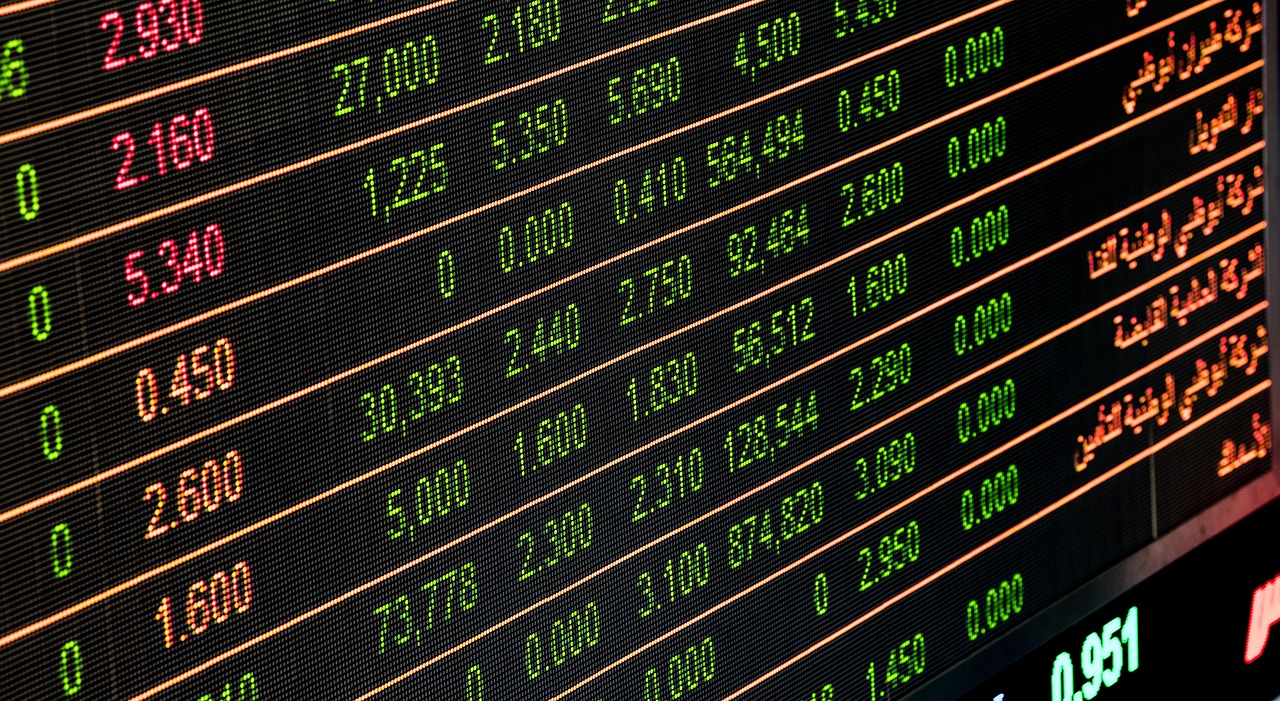
Technical Analysis Techniques
When it comes to crypto trading, technical analysis is your best friend. It’s like having a treasure map that guides you through the unpredictable terrain of the cryptocurrency market. By analyzing historical data, traders can spot patterns and trends that might indicate where prices are headed next. But how do you harness the power of technical analysis effectively? Let’s dive into some key techniques that can elevate your trading game.
One of the most fundamental aspects of technical analysis is understanding chart patterns. These patterns are visual representations of price movements over time and can provide crucial insights into market sentiment. For example, a head and shoulders pattern often signals a reversal in trend, while a double bottom suggests a potential bullish reversal. By recognizing these patterns, traders can make more informed decisions about when to enter or exit trades.
Another powerful tool in a trader's arsenal is the use of moving averages. These indicators smooth out price data to help identify the prevailing trend over a specific period. There are various types of moving averages, including the simple moving average (SMA) and the exponential moving average (EMA). The SMA gives equal weight to all price points, while the EMA gives more weight to the most recent prices, making it more responsive to new information. Understanding how to apply these moving averages can significantly enhance your trading accuracy.
| Type of Moving Average | Description | Best Used For |
|---|---|---|
| Simple Moving Average (SMA) | Averages prices over a specified number of periods | Identifying long-term trends |
| Exponential Moving Average (EMA) | Gives more weight to recent prices | Spotting short-term trends |
In addition to chart patterns and moving averages, traders often use a variety of technical indicators to gain deeper insights into market conditions. Indicators such as the Relative Strength Index (RSI) and Moving Average Convergence Divergence (MACD) can help traders gauge momentum and potential reversals. For instance, an RSI above 70 might indicate that an asset is overbought, while an RSI below 30 suggests it is oversold. These indicators can be particularly useful when combined with other technical analysis techniques to confirm trading signals.
So, how do you put all these techniques into practice? Start by experimenting with different charting tools and platforms that offer robust technical analysis features. Many trading platforms provide built-in indicators and allow you to customize your charts to suit your trading style. Remember, the key is to practice consistently and refine your strategies based on what works best for you.
In summary, mastering technical analysis techniques is essential for any serious crypto trader. By understanding chart patterns, utilizing moving averages, and incorporating technical indicators, you can significantly improve your ability to predict market movements. As you gain experience, these techniques will become second nature, empowering you to make more informed trading decisions in the ever-changing crypto landscape.
- What is technical analysis? Technical analysis is the study of historical price data to forecast future price movements in the market.
- How can I start using technical analysis? Begin by learning about different chart patterns and indicators, then practice using them on a trading platform.
- Are there any risks associated with technical analysis? Yes, while technical analysis can provide valuable insights, it is not foolproof. Always combine it with other forms of analysis and risk management strategies.

Chart Patterns
Chart patterns are like the fingerprints of the market, revealing unique traits that can help traders predict future price movements. By analyzing these patterns, traders can gain insights into market psychology, as they often reflect the collective behavior of buyers and sellers. Just as a detective uses clues to solve a mystery, traders use chart patterns to decipher the market's next move. Understanding these patterns is essential for anyone looking to enhance their trading strategies.
There are several common chart patterns that traders often encounter, each with its implications for potential trades. For instance, the Head and Shoulders pattern is a classic indicator of a trend reversal. It typically appears at the end of an uptrend and signals that the price may soon decline. Conversely, the Inverse Head and Shoulders pattern suggests a potential bullish reversal, often found at the end of a downtrend. Recognizing these patterns can be the difference between a profitable trade and a missed opportunity.
Another important pattern is the Double Top and Double Bottom. A Double Top occurs when the price reaches a peak twice before reversing downwards, indicating a potential bearish trend. On the flip side, a Double Bottom forms after a downtrend, signaling a possible bullish reversal as the price hits a low twice. These patterns provide traders with critical entry and exit points, which can significantly influence their trading decisions.
To illustrate how these patterns work, consider the following table that summarizes some of the most common chart patterns and their implications:
| Chart Pattern | Description | Implication |
|---|---|---|
| Head and Shoulders | A peak (head) between two smaller peaks (shoulders) | Bearish reversal |
| Inverse Head and Shoulders | A trough (head) between two smaller troughs (shoulders) | Bullish reversal |
| Double Top | Two peaks at roughly the same price level | Bearish trend |
| Double Bottom | Two troughs at roughly the same price level | Bullish trend |
Chart patterns are not infallible, but they can provide valuable context for making trading decisions. By combining chart pattern analysis with other technical indicators, traders can develop a more comprehensive view of market conditions. It's essential to practice recognizing these patterns on historical charts, as familiarity can lead to quicker and more confident decision-making when trading in real-time.
In conclusion, mastering chart patterns is a fundamental skill for any trader looking to navigate the volatile waters of cryptocurrency trading. By understanding these patterns, traders can better position themselves to capitalize on market movements and enhance their overall trading strategy.
- What are chart patterns? Chart patterns are formations created by the price movements of an asset on a chart. They help traders predict future price trends based on historical behavior.
- How do I identify chart patterns? Traders can identify chart patterns by analyzing price charts and looking for specific formations, such as peaks and troughs.
- Can chart patterns guarantee profits? While chart patterns can provide insights, they do not guarantee profits. They should be used in conjunction with other analysis techniques.
- Where can I practice recognizing chart patterns? Many trading platforms offer demo accounts where you can practice identifying chart patterns without risking real money.
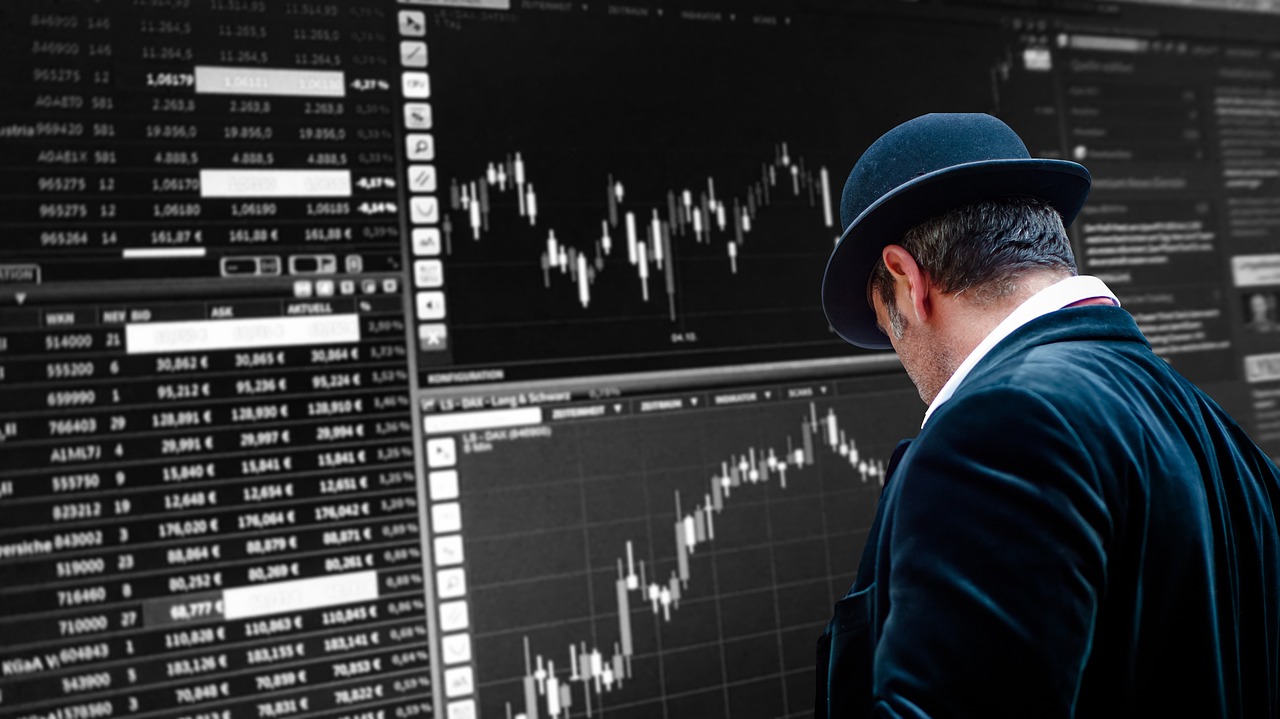
Moving Averages
When it comes to navigating the turbulent waters of cryptocurrency trading, serve as a reliable compass. These statistical tools help traders smooth out price data over a specific period, revealing underlying trends that might be obscured by daily market fluctuations. By examining moving averages, traders can gain invaluable insights into potential future price movements, making informed decisions rather than relying solely on gut feelings.
There are several types of moving averages, each with its own unique characteristics and applications. The most commonly used are the Simple Moving Average (SMA) and the Exponential Moving Average (EMA). The SMA calculates the average price over a set number of periods, providing a straightforward view of price trends. In contrast, the EMA gives more weight to recent prices, making it more responsive to new information and potential price reversals.
To illustrate how these moving averages work, let’s take a look at a hypothetical scenario. Imagine you are analyzing the price of Bitcoin (BTC) over the last 30 days. By calculating the 10-day SMA, you would add the closing prices of Bitcoin for the last ten days and divide that by ten. This simple calculation can help you visualize the trend more clearly. Here's a quick comparison of SMA and EMA in a table format:
| Type | Calculation Method | Responsiveness |
|---|---|---|
| Simple Moving Average (SMA) | Averages prices over a fixed number of periods | Less responsive to recent price changes |
| Exponential Moving Average (EMA) | Gives more weight to recent prices | More responsive to recent price changes |
Understanding the differences between these moving averages can significantly enhance your trading strategy. For instance, if you notice that the price of Bitcoin crosses above the 50-day SMA, it might signal a bullish trend, prompting you to consider entering a long position. Conversely, if the price dips below the 50-day SMA, it could indicate a bearish trend, suggesting it might be time to exit or short the asset.
Moreover, moving averages can be combined with other technical indicators to create a more robust trading strategy. For example, many traders use the crossover strategy, where they look for points where a short-term moving average crosses above or below a long-term moving average. This method can help identify potential buy or sell signals.
In conclusion, mastering moving averages can be a game-changer for crypto traders. They not only help smooth out the noise of price fluctuations but also provide critical insights into market trends. By incorporating both SMA and EMA into your trading toolkit, you can better navigate the unpredictable waters of cryptocurrency trading and make more informed decisions. So, are you ready to embrace the power of moving averages in your trading strategy?

Backtesting Trading Strategies
Backtesting is like a time machine for traders, allowing them to travel back to the past and see how their trading strategies would have performed under various market conditions. It’s an essential process that helps traders evaluate the effectiveness of their strategies using historical data. By applying a trading strategy to past data, traders can gain insights into how it might perform in the future, effectively minimizing risks and maximizing potential profits. So, how do you conduct backtesting effectively? Let’s dive into the key components!
First off, setting parameters is crucial for accurate backtesting results. You need to define the rules of your trading strategy clearly. This includes specifying entry and exit points, stop-loss levels, and any other criteria that dictate when to buy or sell. Imagine you’re a chef following a recipe; if you miss a step or use the wrong ingredient, the final dish might not turn out as expected. Similarly, in trading, if your parameters are not well-defined, your backtest results may lead you astray.
Once you've set your parameters, it’s time to run the backtest. Many trading platforms offer built-in tools for backtesting, allowing you to input your strategy and historical data quickly. However, it’s essential to ensure that the data you’re using is clean and reliable. Using inaccurate or incomplete data can skew your results, leading to false confidence in your strategy. Think of it as trying to predict the weather based on faulty forecasts—you wouldn’t want to carry an umbrella if it’s not going to rain!
After running the backtest, the next step is evaluating performance. This involves analyzing the results to understand how well your strategy would have performed. Key metrics to consider include:
| Metric | Description |
|---|---|
| Win Rate | The percentage of trades that were profitable. |
| Return on Investment (ROI) | The total profit or loss made compared to the initial investment. |
| Maximum Drawdown | The largest drop from a peak to a trough in the value of the portfolio. |
| Sharpe Ratio | A measure of risk-adjusted return, indicating how much excess return is received for the extra volatility endured. |
By examining these metrics, traders can refine their strategies, making adjustments where necessary. For instance, if your win rate is low but your ROI is high, it might indicate that while you’re winning fewer trades, the ones you do win are significantly profitable. This could lead to a reevaluation of your entry and exit strategies. On the other hand, if your maximum drawdown is uncomfortably high, it may be time to reassess your risk management techniques.
In conclusion, backtesting is a powerful tool in a trader's arsenal. It’s not just about running simulations; it’s about learning from past data to make more informed decisions in the future. By carefully setting parameters, ensuring data accuracy, and evaluating performance, traders can develop strategies that are not only theoretically sound but also practically viable. Remember, in the world of crypto trading, knowledge is power, and backtesting is a key part of that knowledge!
- What is backtesting? Backtesting is the process of applying a trading strategy to historical data to determine its effectiveness.
- Why is backtesting important? It helps traders understand how their strategies would have performed in the past, allowing for better decision-making in the future.
- What metrics should I look at when backtesting? Key metrics include win rate, ROI, maximum drawdown, and Sharpe ratio.
- Can I rely solely on backtesting results? While backtesting is valuable, it should be used in conjunction with other analysis methods and real-time market observations.

Setting Parameters
When it comes to backtesting trading strategies using historical data, is a critical step that can make or break your analysis. Think of parameters as the rules of a game; they define how you play and ultimately determine your success. Without well-defined parameters, your backtesting results may be misleading, leading you to make poor trading decisions based on flawed data. So, how do you go about setting these parameters effectively?
First, it’s essential to define the time frame for your analysis. Are you looking at short-term trades that last hours or days, or are you focusing on long-term investments over weeks or months? Your choice of time frame will influence the type of data you analyze and the strategies you develop. For instance, a day trader might focus on minute-by-minute data, while a long-term investor may look at daily or weekly charts.
Next, consider the entry and exit points for your trades. These points are crucial because they dictate when you will enter or exit a position based on your historical analysis. For example, you might set parameters that dictate entering a trade when a specific moving average crosses another, or when the price hits a certain support level. The more precise you are in defining these points, the clearer your backtesting results will be.
Another important aspect to consider is the risk tolerance you are willing to accept. This involves determining how much of your capital you are prepared to risk on each trade. A common approach is to risk only a small percentage of your total capital on any single trade, often around 1% to 2%. By setting this parameter, you can ensure that even a series of losses won’t significantly impact your overall portfolio.
Lastly, you should also think about the time limits for your trades. How long do you plan to hold your positions? Setting a maximum duration for your trades can help you avoid emotional decisions and stick to your strategy. For example, if you decide that you will only hold a position for a maximum of two weeks, you can build a backtesting strategy around that timeframe, allowing you to analyze how that parameter affects your overall performance.
In summary, setting parameters is not just a technical step; it's an art that requires a deep understanding of your trading style, the market conditions, and your personal risk appetite. By carefully defining your time frame, entry and exit points, risk tolerance, and time limits, you can create a robust backtesting framework that will ultimately enhance your trading strategies and decision-making process.
- What are the most important parameters to set for backtesting? The most crucial parameters include time frame, entry and exit points, risk tolerance, and time limits for trades.
- How do I determine my risk tolerance? Assess your financial situation and consider how much you can afford to lose on each trade, typically between 1% to 2% of your total capital.
- Can I adjust parameters after backtesting? Yes, you can refine your parameters based on the results of your backtesting to improve your trading strategy.

Evaluating Performance
When it comes to trading cryptocurrencies, evaluating the performance of your backtested strategies is paramount. This process is like looking in a rearview mirror while driving; it helps you understand what worked and what didn't, allowing you to make informed decisions moving forward. The goal is to refine your strategies by analyzing key metrics that reveal the effectiveness of your trades. So, how do you go about this?
First, you need to focus on a few essential metrics that can provide insights into your trading strategy's performance. Here are some of the most important metrics to consider:
- Return on Investment (ROI): This metric shows how much profit you made relative to your initial investment. A higher ROI indicates a more effective strategy.
- Win Rate: This is the percentage of trades that were profitable. A high win rate can be comforting, but remember that even a strategy with a low win rate can be profitable if the winning trades are significantly larger than the losing ones.
- Maximum Drawdown: This figure represents the largest drop from a peak to a trough in your trading equity. Understanding your maximum drawdown is crucial for assessing risk and ensuring that you can withstand potential losses.
- Sharpe Ratio: This ratio measures the risk-adjusted return of your strategy. A higher Sharpe ratio indicates that you are receiving a better return for the risk taken.
Once you have these metrics, it's essential to interpret them in the context of your trading goals. For instance, if your aim is to achieve a steady income, a high win rate may be more important than having a high ROI that comes from a few large trades. On the other hand, if you're looking for explosive growth, you might be more tolerant of a lower win rate, provided that your winning trades are substantial.
Moreover, it's also beneficial to compare your strategy's performance against a benchmark, such as a major cryptocurrency index or a buy-and-hold strategy. This comparison can help you understand whether your active trading efforts are yielding returns that justify the time and risk involved.
Finally, remember that evaluating performance is not a one-time task. The cryptocurrency market is incredibly dynamic, and what works today may not work tomorrow. Therefore, continually revisiting and reassessing your strategies based on new historical data and market conditions is crucial. This ongoing evaluation is akin to fine-tuning a musical instrument; it ensures that your trading strategy remains harmonized with the ever-changing market landscape.
- What is the importance of backtesting in crypto trading?
Backtesting allows traders to test their strategies against historical data to see how they would have performed in the past, helping to identify strengths and weaknesses. - How often should I evaluate my trading performance?
It's advisable to evaluate your performance regularly, ideally after every trading cycle or significant market movement, to adapt to changing conditions. - What tools can help in evaluating trading performance?
There are various tools available, such as trading journals, analytics platforms, and backtesting software that can help you analyze your trading performance effectively.

Risk Management Strategies
When it comes to crypto trading, one of the most critical aspects that can make or break your success is risk management. The cryptocurrency market is notoriously volatile, with prices swinging dramatically in short periods. Therefore, having a solid risk management strategy is not just a good idea; it's a necessity. By analyzing historical data, traders can develop strategies that minimize potential losses while maximizing their chances of profit.
One effective way to manage risk is through position sizing. This involves determining the right amount of capital to allocate to each trade based on your overall portfolio size and the level of risk you are willing to take. Historical data can provide insights into the volatility of specific cryptocurrencies, allowing traders to set position sizes that align with their risk tolerance. For example, if a particular coin has shown a history of significant price fluctuations, you might decide to allocate a smaller portion of your capital to that trade.
Another essential component of risk management is the implementation of stop-loss orders. These orders automatically sell your assets when the price falls to a predetermined level, thus protecting you from incurring significant losses. By analyzing past price movements, traders can identify key historical support and resistance levels to set their stop-loss orders effectively. For instance, if a cryptocurrency has historically bounced back from a specific price point, placing a stop-loss just below that level can provide a safety net while allowing for potential upside.
To illustrate the importance of these strategies, consider the following table that summarizes key risk management techniques:
| Strategy | Description | Benefits |
|---|---|---|
| Position Sizing | Determining the amount of capital to risk on a trade based on historical volatility. | Helps manage exposure and aligns with risk tolerance. |
| Stop-Loss Orders | Automatic sell orders triggered at specific price levels to limit losses. | Provides protection against significant downturns. |
| Diversification | Spreading investments across various cryptocurrencies to reduce risk. | Mitigates the impact of a poor-performing asset. |
In addition to these strategies, diversification is another key element of effective risk management. By spreading your investments across different cryptocurrencies, you can reduce the impact of a single asset's poor performance on your overall portfolio. Historical data can help you identify which assets tend to move in tandem and which are more independent, allowing you to build a well-rounded portfolio that minimizes risk.
Ultimately, the goal of these risk management strategies is to create a safety net that allows you to trade confidently. By utilizing historical data to inform your decisions, you can develop a more nuanced understanding of market behavior and tailor your strategies accordingly. Remember, in the world of crypto trading, it's not just about making profits; it's about protecting your capital and ensuring that you can continue trading in the long run.
- What is risk management in crypto trading? Risk management in crypto trading involves strategies and techniques to minimize potential losses while maximizing profits.
- How can historical data help with risk management? Historical data provides insights into past market behavior, allowing traders to set appropriate position sizes and stop-loss levels based on volatility.
- What is position sizing? Position sizing is the process of determining how much of your capital to allocate to a trade based on your risk tolerance and market conditions.
- Why are stop-loss orders important? Stop-loss orders help protect your investment by automatically selling your assets when they reach a certain price, preventing larger losses.

Position Sizing
Position sizing is a critical aspect of trading that can significantly influence your overall success in the cryptocurrency market. It refers to the amount of capital you allocate to a particular trade, and getting this right can mean the difference between a profitable venture and a devastating loss. Imagine you're a sailor navigating turbulent waters; if you set your sails too wide, you risk capsizing, but if they're too narrow, you won't harness enough wind to move forward. Similarly, in trading, understanding how much to invest in each position can help you sail smoothly through the volatility of crypto markets.
One effective way to determine your position size is by considering your risk tolerance and the volatility of the asset you're trading. A common rule of thumb is to risk only a small percentage of your total trading capital on any single trade—typically between 1% and 3%. This approach ensures that even a series of losses won't wipe out your entire account. For instance, if you have a trading account worth $10,000 and decide to risk 2% per trade, your maximum loss per trade would be $200. This method allows you to stay in the game longer and gives you the opportunity to recover from losses.
To calculate your position size, you can use the following formula:
| Formula | Description |
|---|---|
| Position Size (Account Size x Risk Percentage) / Trade Risk | This formula helps you determine how much capital to allocate to a trade based on your risk tolerance and the distance to your stop-loss. |
Let’s break this down further. Suppose you have an account size of $10,000, you’re willing to risk 2% ($200), and your stop-loss is set to limit your loss to $10 per share. Plugging these numbers into the formula, you would calculate:
Position Size ($10,000 x 0.02) / $10 20 shares
This means you should buy 20 shares of the cryptocurrency. By adhering to this approach, you’re effectively managing your risk while still allowing for the potential of significant gains. Remember, the key is to adjust your position size based on the volatility of the asset. If a cryptocurrency is experiencing higher volatility, you might want to decrease your position size to mitigate risk.
In summary, position sizing is not just about how much you invest; it’s about understanding your risk and managing it wisely. By applying the principles of position sizing effectively, you can enhance your trading strategy and navigate the unpredictable waters of cryptocurrency trading with confidence.
- What is position sizing? Position sizing refers to the amount of capital allocated to a specific trade, which is crucial for managing risk.
- How do I calculate my position size? You can calculate position size using the formula: Position Size (Account Size x Risk Percentage) / Trade Risk.
- Why is position sizing important? Proper position sizing helps manage risk, ensuring that losses do not significantly impact your trading capital.
- What percentage of my account should I risk per trade? It's generally recommended to risk between 1% and 3% of your total trading capital on any single trade.

Stop-Loss Orders
In the fast-paced world of cryptocurrency trading, the importance of cannot be overstated. These orders act as a safety net, designed to limit potential losses by automatically selling a cryptocurrency when it reaches a predetermined price. Imagine you're on a roller coaster; you want to enjoy the ride but also want to ensure you have safety measures in place in case things go awry. That’s precisely what stop-loss orders do for traders—they provide a sense of security amidst the market's wild fluctuations.
Setting an effective stop-loss order involves a bit of strategy. It's not just about picking a random price; it requires careful consideration of historical data to determine the most suitable level. For instance, if you analyze the price movements of a particular cryptocurrency, you might notice key support and resistance levels. These are areas where the price has historically struggled to go below or above. By placing your stop-loss order just below a support level, you can protect yourself from significant downturns while still allowing for normal market fluctuations.
When establishing your stop-loss order, consider the following key factors:
- Volatility: Cryptocurrencies are notoriously volatile. Understanding the historical volatility of a particular asset can help you set a stop-loss that is neither too tight (which could trigger unnecessary sales) nor too loose (which could expose you to larger losses).
- Timeframe: The timeframe of your trades also plays a critical role. Are you a day trader looking to make quick profits, or are you a long-term investor? Your stop-loss strategy should align with your trading style.
- Market Trends: Historical data can reveal whether an asset is trending upwards or downwards. If the overall market sentiment is bearish, it might be wise to set tighter stop-loss orders.
To illustrate this further, let’s consider a hypothetical example. Suppose you purchased a cryptocurrency at $100, and after analyzing its historical price movements, you identify a strong support level at $90. You might decide to set your stop-loss order at $89. This way, if the price dips to $89, your order will execute, selling your asset and preventing further losses. Conversely, if the price continues to rise, you can adjust your stop-loss upwards to lock in profits, a strategy known as a trailing stop-loss.
However, it’s essential to remember that stop-loss orders are not foolproof. In highly volatile markets, prices can gap down, meaning they can jump from one price to a much lower price without trading at the prices in between. This phenomenon can result in your stop-loss order being executed at a price significantly lower than expected. Therefore, while stop-loss orders are a crucial tool in risk management, they should be used alongside other strategies to ensure comprehensive protection against market risks.
In conclusion, stop-loss orders are like your safety harness while navigating the thrilling rides of cryptocurrency trading. By carefully analyzing historical data and setting informed stop-loss levels, you can protect your investments and navigate the turbulent waters of the crypto market with greater confidence.
- What is a stop-loss order? A stop-loss order is a trade order designed to limit an investor's loss on a position in a security. It is executed when the asset's price reaches a specified level.
- How do I set a stop-loss order? To set a stop-loss order, determine the price level at which you want to sell your asset to minimize losses, considering historical price movements and volatility.
- Can stop-loss orders guarantee profits? No, while stop-loss orders help manage risk, they do not guarantee profits and can result in losses if the market moves unfavorably.
- What is a trailing stop-loss? A trailing stop-loss is a type of stop-loss order that moves with the market price. It allows you to lock in profits as the price increases while still providing protection against significant downturns.
Frequently Asked Questions
-
What is historical data in crypto trading?
Historical data refers to past price movements and trading volumes of cryptocurrencies. It provides traders with insights into market trends, helping them make informed decisions based on previous performance.
-
Where can I find reliable historical data for cryptocurrencies?
You can find reliable historical data on various cryptocurrency exchanges, financial websites, and specialized data platforms. Many exchanges offer API access and CSV downloads for easy retrieval of this data.
-
How can I use technical analysis in crypto trading?
Technical analysis involves analyzing historical data to predict future price movements. Traders use various techniques such as chart patterns and moving averages to identify trends and make trading decisions.
-
What is backtesting and why is it important?
Backtesting is the process of applying trading strategies to historical data to evaluate their effectiveness. It helps traders understand how a strategy would have performed in the past, allowing them to refine their approaches for future trades.
-
How can historical data assist in risk management?
Historical data can inform risk management strategies by providing insights into past volatility and price levels. Traders can use this information to set stop-loss orders and determine appropriate position sizes to minimize potential losses.
-
What are stop-loss orders and how do they work?
Stop-loss orders are automated instructions to sell a cryptocurrency when it reaches a certain price level. By using historical price data to set these levels, traders can protect themselves from significant losses during market fluctuations.




